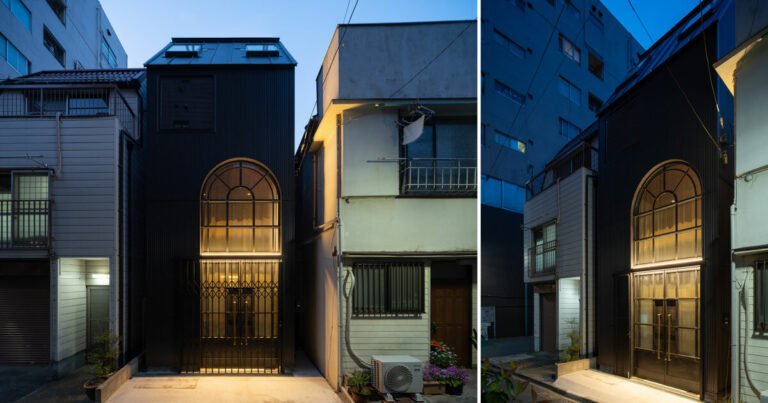University of Miami Lakeside Village // ArquitectonicaGEO
Text description provided by the architects.
The new 12.5-acre (544,500 SF), mixed-use student housing complex comprised of 26 interconnected buildings and several outdoor spaces is the home to 1,115 students alongside classrooms, music practice rooms, meditation rooms, study areas, a 200-seat auditorium, offices, an exhibition hall, outdoor gym, flexible use sand volleyball court, a package and mail center and food/beverage options.

© ArquitectonicaGEO
What used to be a waterfront parking lot was replaced with a large common outdoor gardenand green space. The idea of reclaiming the ground floor for students, common use, and outdoor tropical space suggested the importance of raising the living units and the building above the ground plane. The proposed design eliminates vehicular traffic in exchange for pedestrian centric major and secondary walkways connecting key nodes and buildings through the landscape.

© ArquitectonicaGEO
Lakeside Village fronts Lake Osceola (the core and heart of the Gables Campus) and is filled with a lush and native tropical garden.
The unique array of interconnected buildings and gathering spaces – sleek, geometric volumes seven stories tall, interlaced by lush gardens and topped with flowering perennials that peek over the building’s sloped green roofs.

© ArquitectonicaGEO
The project is a bold experiment in low-impact development in part because of the threat that climate change and sea level rise pose, made it a much more involved multi-disciplinary design process to design and build a highly functional and resilient complex that houses learning spaces of various types within the common areas of the environment to create collaborative shared living and learning environments.

© ArquitectonicaGEO
Special consideration was given to communal spaces that provide varying degrees of social, learning, and activity programming potential and that will activate the ground level.
The design objectives included delineating natural paths of travel, affording covered movement systems, creating plazas and courtyards, reinstating a tropical landscape and designing a building that feels synchronous with the natural environment using scale, repetition, structured irregularity, and natural materials.

© ArquitectonicaGEO
The project site is 70% pervious and it includes 26 sloped extensive green roofs that encompass 60,000 SF, custom designed to withstand 200mph winds. They are designed to be uninhabitable but become visible as you move through campus and they tilt toward your view. They provide several sustainability benefits: reducing stormwater runoff, improving air quality, reducing urban heat island effect, providing extra insulation for the building, and offering a destination for pollinators.

© ArquitectonicaGEO
Due to the scale of these planted rooftops that extend across 26 independent structures, maintenance had a lead role in plant selection. The design intent was to “set it and forget it” by simply setting the state for a wildflower meadow on the rooftops, which seeds and reseeds itself with little human intervention.

© ArquitectonicaGEO
Grass seed paired with container-grown native flowering plants that attract pollinators were planted with the understanding that over time, the green roof will evolve into an even more complex, organic ecosystem as seeds disperse onto the rooftops..

© ArquitectonicaGEO
University of Miami Lakeside Village Gallery



